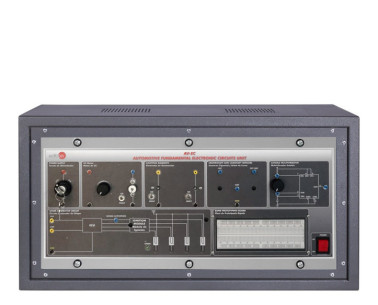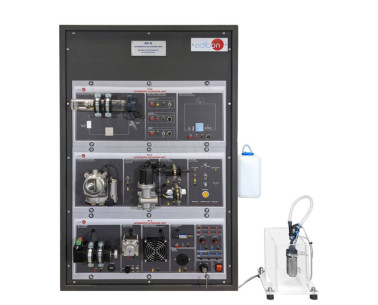The Automotive Auxiliary Components Unit, "AV-AC", provides a practical solution to obtain advance knowledge in the electronic and electric systems used in the automotive field nowadays.
All sensors and actuators included in the "AV-AC" unit are mounted on individual plates with the name, the standardized symbol and the 4 mm lab jack to connect the component. All sensors and actuators are real automotive components and can be connected to the electronic control unit at the same time, in order to understand the operation of each component working together, like in a real situation. The components can be mounted on the vertical frame included with the unit in order to test them alone or connected to the electronic control unit.
The sensors and actuators are focused on different automotive auxiliary systems: car lightening system, wiper washer system, power door locks system, car instrument panel, electric windows system, ultrasonic car park system, etc. All these systems components are real automotive sensors and actuators. The sensors signal measurement and the control signal of the actuators in the "AV-AC" unit are done through digital and analog signals, PWM signals and the network protocol CAN bus.
The "AV-AC" unit also includes a fault generation module, which can insert up to twelve faults in the electronic control unit (faults in different wires of the network protocol CAN bus, faults in the 12 VDC power supply, etc.).
The "AV-AC" unit is provided with a different set of practical exercises, through which the student will understand how the components used in electric and electronic systems in the automotive technology work.
 Cookie-Präferenzen
Cookie-Präferenzen

















